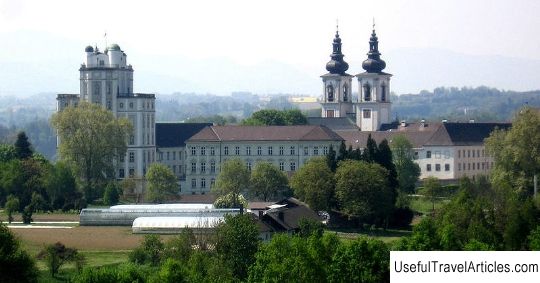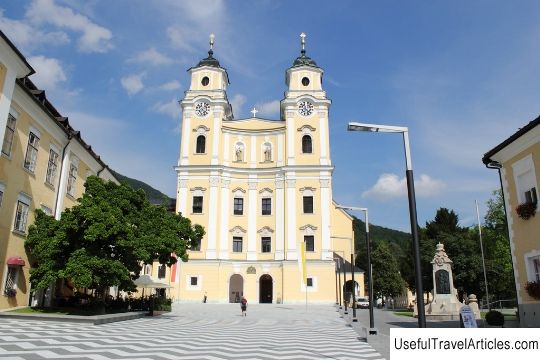Benedictine monastery Kremsmunster in Austria, Upper Austria health resort
Rating: 8,2/10 (800 votes)  The Benedictine Monastery of Kremsmunster is one of the oldest monasteries located on Austrian territory. The monastery is located in the commune of Kremsmunster, in the foothills of the Alps. The monastery was founded by the Bavarian duke Tassilo III in 777. Legend has it that the monastery was founded in a place where a herd of wild boars attacked his son Gunther while hunting. As a result, the young man died. In the 10th century, during the raids of the Hungarians, the monastery complex was seriously damaged. Soon his domain was divided between the Duke of Bavaria and the bishops. The restoration work of the monastery was started only under Henry II. At the end of the 17th century, the monastery library was built on the initiative of Carl Carlone. The library immediately gained wide popularity, especially among the prominent scholars of Kremsmunster. Many historical discoveries were written here, as well as the stories of the Bavarian dukes and the bishop of Passau. Nowadays, the library contains more than 160 thousand volumes and about 1 700 manuscripts. In different periods, the monastery was led by abbots, who had a considerable influence on the history of the monastery. In the middle of the 16th century, Abbot Gregor Lechner turned the monastic school into a public one, he also advocated the preservation of Catholicism in Kremsmunster – During this period, Protestant doctrines were widespread in the region. As Protestantism continued to flourish rapidly, Abbot Weiner was forced to bring disagreements to the monastery, which almost provoked a big conflict. In the 18th century, Alexander Fixlmilner became the most respected and famous abbot of the monastery. On his initiative, a large observatory was built, while Fikslmilner conducted charitable activities. One of the most valuable exhibits of the monastery is the bowl of Tessilo III. The bowl was made of silver and copper with gilding in 769. The chalice is still used today during religious services. During Holy Week, during the last three days, every man can become a `` monk for a while. ''  We also recommend reading Tavastia Rock Club in Finland Topic: Benedictine monastery Kremsmunster in Austria, Upper Austria health resort. |




